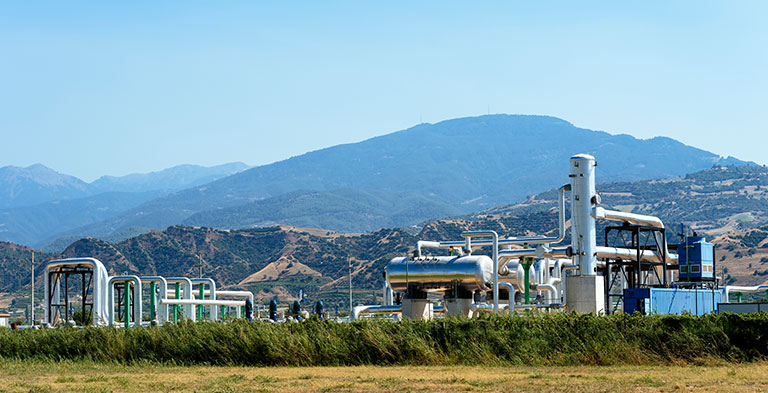Alberta finalizes new geothermal regulatory regime with Directive 089

Background
Geothermal energy — heat from deep below the Earth’s surface — is increasingly being sourced to provide heat and energy in the place of conventional fossil fuels, and is likely to play an important role in achieving provincial and federal net-zero goals in Canada. Alberta has been working to establish a detailed regulatory regime to support growth in the geothermal industry, as we discussed in prior posts in 2020 (which also provides an overview of Alberta’s geothermal resources) and 2022.
Most recently, on August 15, 2022, the Alberta Energy Regulator (AER) released Directive 089: Geothermal Resource Development (Directive 089), which sets out specific requirements for geothermal wells, facilities and pipelines in Alberta. Directive 089 follows the creation of the Geothermal Resource Development Rules (GRDR) on June 30, 2022. Together, the GRDR and Directive 089 set out requirements for developing geothermal resources “below the base of groundwater protection” (the depth at which groundwater is estimated to transition from non-saline to saline) for the entire life cycle of a project.
This post provides a brief overview of the GRDR and Directive 089 and the clarity that they have added to the regulatory regime for the development of geothermal resources in Alberta since our previous post about that regime.
The GRDR
Similar to how the Geothermal Resource Development Act is modelled after the Oil and Gas Conservation Act,[1] the new GRDR are loosely modelled after the Oil and Gas Conservation Rules (OGCR). The GRDR include similar requirements for licence eligibility and transfer, drill cutting sampling, record-keeping and reporting, completion well logs and minimum safety requirements such as buffer distances for having open flames and operating vehicles near the wellhead.
However, the GRDR are significantly shorter than the OGCR and contain fewer parts and sections, which should make them more comprehensible and user-friendly. For example, under the OGCR, the requirements for suspending, abandoning and closing an oil and gas well are scattered throughout, but those requirements for a geothermal well are all contained within Part 5 of the GRDR. Drilling spacing units and target areas also do not apply to geothermal well spacing. Additionally, the GRDR contain a specific prohibition against wasting energy resources, similar to the prohibition in Alberta’s new Mineral Resource Development Act regarding the development of critical minerals, such as lithium, uranium and potash.
Directive 089
A draft of Directive 089 was released for feedback in August 2021. Like the draft version, the finalized version of Directive 089 sets out requirements regarding a broad range of issues relevant to geothermal projects, such as licence applications, surface rights, consultation and notification, emergency preparedness and response, licence eligibility, licensee assessments to identify risks and liabilities, security deposits and licence transfers, as well as specific technical, application and reporting requirements for geothermal wells, facilities and pipelines. Some of these requirements are discussed in more detail below. A summary of feedback provided on the draft Directive 089, as well as the AER’s responses, is available on the AER’s website [PDF].
Notably, Directive 089 indicates which of the AER’s oil and gas development requirements also apply to geothermal wells and that, depending on the type of geothermal development, additional authorizations may be required under other legislation, such as the Water Act, the Environmental Protection and Enhancement Act and the Public Lands Act. As we previously noted, Alberta’s electricity regime, administered by the Alberta Utilities Commission, imposes an additional set of requirements on geothermal projects that produce power.
Directive 089 clarifies that the Surface Rights Act does not apply to geothermal resource development in Alberta (unlike oil and gas development), meaning project proponents will have to obtain the consent of every landowner on whose property the geothermal development will be situated. This includes obtaining dispositions under the Public Lands Act for projects on Crown lands. Licence applications will have to be made in the manner set out in Directive 089, as will applications to transfer licences.[2] As with other AER licences and transfer applications, the prospective licensee must be eligible to hold AER licences under Directive 067. Transfer applications will also trigger a holistic licensee assessment of the transferee and transferor to ensure both companies will be capable of addressing their liabilities post-transfer (as generally discussed in our Update about the new holistic licensee assessment in Directive 088).
Specific requirements for applications for geothermal wells, facilities and pipelines are set out in sections 3.4, 4.2 and 5.2 of Directive 089, respectively, and include requirements related to liabilities and risk assessments and mitigation and monitoring.
Directive 089 also clearly lays out the process to convert an oil and gas well to a geothermal well, in section 3.4.6, which is noteworthy given the previous interest in such conversions as a means to limit costs and impacts and to reduce the number of orphan oil and gas wells in Alberta. An applicant for a conversion well must be either the current licensee of the oil and gas well or the holder of a transfer licence granted under the GRDR for that well. Well conversions require the approval of the AER and the well must meet all of the requirements for a geothermal well under the GRDR and Directive 089. Even if an oil and gas well has existing surface access rights, the surface owner’s consent will need to be re-confirmed as part of the application for conversion.
Conclusion
With the introduction of the GRDR and Directive 089, the AER has addressed many of the uncertainties regarding Alberta’s new framework for geothermal resource development. By leveraging the AER’s existing expertise in energy resource development, this new framework should facilitate investment in this emerging industry in Alberta once key financial considerations are addressed, including whether and to what extent the Alberta Government intends to impose a royalty on geothermal resources.
Other environmental and regulatory issues surrounding geothermal resource development are discussed in our guide, Emerging technologies in energy: Environmental and regulatory considerations for Western Canada.